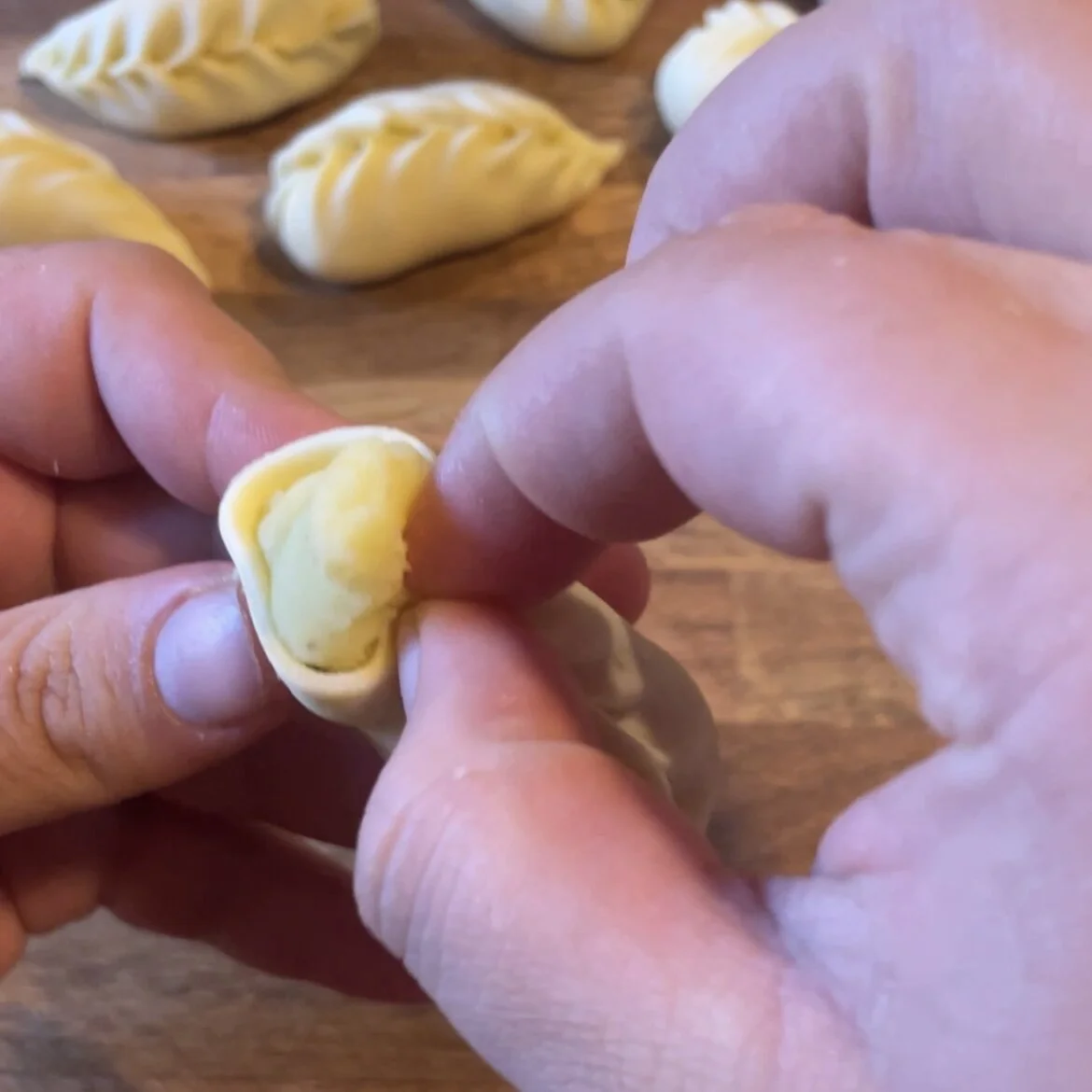Culurgiones d'Ogliastra
Culurgiones have a special place in my heart. During the first year of my master's degree, I made friends with a bunch of Sardinian colleagues. They opened up my eyes to a type of Italian food that was completely new to me - malloreddus with mushrooms and cream, tiny fregula cooked with saffron, and soft, delicious pardulas. I heard them rave about culurgiones long before I tasted them. Whenever they visited home, they would return to school with bags of pasta, bottles of olive oil, and even trays of frozen food lovingly prepared by their relatives. I didn't even know you were allowed to fly with frozen food, but one time our group chat on Whatsapp blew up with excitement - someone had culurgiones in the freezer! They stayed in there for weeks, as we waited for the best time to have a little Sardinian dinner party. One night, the text arrived: "culurgiones tonight?" And what can I say, my life has never been the same.
Culurgiones, at least the variation I learned to make, hail from the Sardinian province of Ogliastra. They are filled with potato, mint, and Pecorino sardo cheese, and served with a simple tomato sauce that allows the pasta to be the undisputed star.
Their distinctive closure takes practice and deft hands to master (I still haven't yet!) but when done properly, the front seam of the dumpling resembles a wheat spike.
To make this recipe you will need:
For the pasta dough:
200g 00 flour
300g semola rimacinata
230g water
15g extra virgin olive oil
For the filling:
1 kg yellow potatoes
80g extra virgin olive oil
14 mint leaves, finely chopped
100g Pecorino sardo, grated
1 garlic clove
For the sauce:
500g tomato passata
3 leaves of basil
20g extra virgin olive oil
1 garlic clove
The morning of the day before you plan to serve your culurgiones, leave one clove of garlic to infuse in 80g of extra virgin olive.
That night, boil your potatoes with the skin on until fork tender. As soon as they have cooled enough to be handled, peel and mash the potatoes. A potato ricer or food mill is best to achieve a fluffy consistency, but you can always use a fork or masher if necessary. Combine the potatoes with the mint leaves, the grated Pecorino sardo, salt and pepper to taste, and the garlic olive oil (discarding the clove, however). Let this mixture rest overnight in the fridge.
The next day, make your pasta dough. Combine both flours with a healthy pinch of salt and dump out on your work surface, creating a volcano with your fingers. Pour in the water and olive oil. Start to mix with a fork, then your fingers, and finally work the dough with a bench scraper, before kneading with your hands until you have achieved a smooth, homogenous dough. Cover and let rest for at least 30 minutes.
Next, roll out the dough. I used an electric attachment on my kitchen aid, but you could also use a hand-crank pasta machine or just a rolling pin. The dough will likely require a sprinkling of extra flour to prevent sticking.
Using a round cutter or a cup, cut the rolled dough into disks roughly 9cm in diameter. Form a scoop of the filling into an oblong shape, and place it in the center of a dough circle.
Next comes the tricky part. To fold your culurgiones, place the unfolded dumpling in your non-dominant hand. Using the index finger and thumb of your dominant hand, alternate folding small bits of dough from either side of the circle into the middle. Each time you have folded in a bit of dough, pinch and tuck down slightly, to make a seal. Repeat until you reach the end of your dumpling, at which point you can twist and taper the dough to form a tightly sealed tail.
If a bit of potato filling falls out towards the end, don't worry - this means your culurgiones are perfectly stuffed! It's better to over-fill, and have some spill out as you seal the dough, than to under-fill, which will leave your culurgiones lumpy and misshapen, with unsightly air pockets.
It takes a while to get comfortable sealing your culurgiones. I watched a bunch of videos before even attempting my first one. If you need more visual explanation beyond the photos above, check out the culurgiones video featured on the Pasta Grannies YouTube channel.
To make the sauce: leave your garlic clove to lightly roast in a pan with olive oil for a few minutes, then add in the tomato passata, salt, pepper, and basil leaves. Let gently simmer for 20-30 minutes, then remove the garlic. In the meantime, cook your culurgiones for a few minutes in salted boiling water, until they float to the surface. Strain and serve on top of the tomato sauce, with an extra sprinking of the Pecorino sardo.
























